 |
|
Smith River |
| FTLComm - Smith River, B.C. - Saturday, December 8, 2001 |
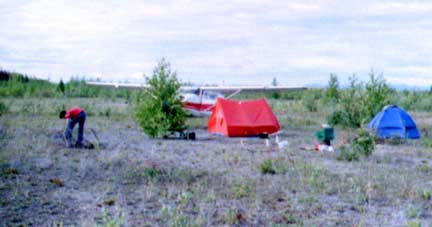 In the summer of 1982 we began exploring our surroundings with our 172 around Watson Lake Yukon and clearly one of the most interesting places was an abandoned airfield mid way between Fort Nelson and Watson Lake. The airfield was an amazing 6,200 feet long lying roughly North and South in a sheltered valley. It had been constructed as a backup landing field during the |
 |
 the tense days of World War II but the Ministry of Transport had maintained the site into the seventies and we had met people would had worked on and manned the place up until it was shut down. Our first visit to Smith River was an occasion and we will at some other time show you what it was like then with its log town and terminal, sleeping barracks, garage and houses. But the ravages of the fires of the spring and early summer of 1983 over ran the site consuming all of the structures. The pictures on this page were taken August 12, 13 and 14th of 1983. The picture here shows the river valley and the magnificent water falls half way between the runway and the Alaskan highway to the South. On the left side you can see a trail which is the only land approach to the area. |
 |
 Our mission was to go out to the runway with ax, shovels, chain saw, and lawn mower to lengthen the runway which by that time was down to less than three thousand feet usable as the forest was moving in from both the North and South. We hacked away at the saplings and created more than a thousand feet of safe landing space. At the top of the page you can see Tim II working to get the chain saw going near our little camp site beside the runway. But we had also come to explore and after a hard day of bush whacking the three of us walked the short distance to the River itself that runs along the East side of the runway coming down from the mountains to the North. There is even a hot springs somewhere at the North end of the runway but we did not get that far. Though this was late summer streams flowing out of the mountains are only a few degrees above freezing and that clouded afternoon we had a go at fishing and the need to get to the other side of the stream sent the two adventurers into the water. |
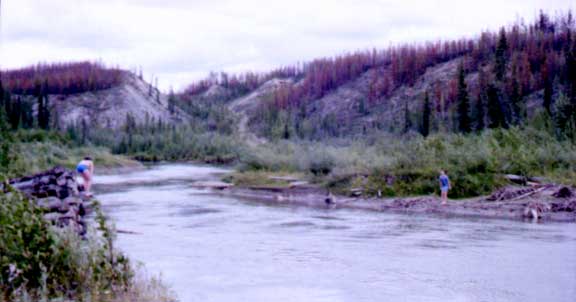 |
 All three of us were aware of the dangers of hypothermia and the old fat guy remained on shore. In this map the orange line marks the location of the strip and the falls are shown to the South. Only a short ways East on the Alaskan highway is the Liard Hot Springs park which is a must stop for tourists traveling the Alaskan highway and for Watson Lakers in the winter to come down the two hour trip, walk the half mile out to the springs and in -30º put on a bathing suit and get into the very hot water. This is one of the hottest springs that you will find and thousands of people and the odd moose take that plunge every year. |
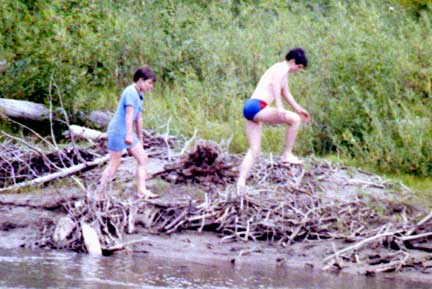 But the Smith River is not hot as this pair of pilgrims can testify the shorter one in the picture with is arms and body rigid after working his way through the strong near freezing current. Water in all of northern Canada can be very dangerous. We spent every hour we could in the air for almost a week searching the banks of the Liard River above the Village of Liard when a pair of prospectors swamped their canoe. The talker and younger one was pulling the bow to shore while the older and shorter |
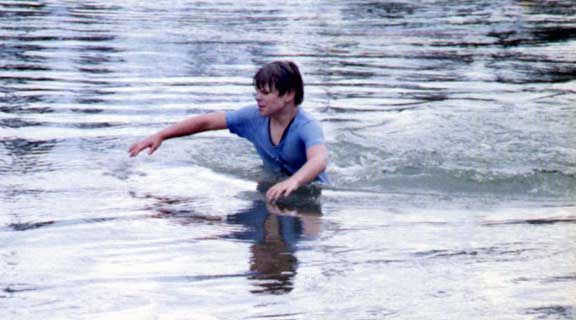 |
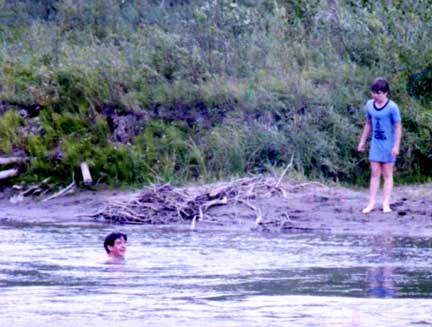 one was at the stern. When the front guy got to shore the man at the stern was gone and we and other searchers never saw any sign of him again. After these guys finished crossing the river twice and we warmed up around a fire we trudged back to the camp site and made the most astonishing discovery. Strawberries, growing on the side of the runway, each berry about the size of a small pea and with the flavour of a thousand store bought strawberries in each tiny bite. The three of us lay on our bellies picking berries but no matter how many we found our plastic buckets remained near empty and each of us had outstanding red lipped smiles. |
 |
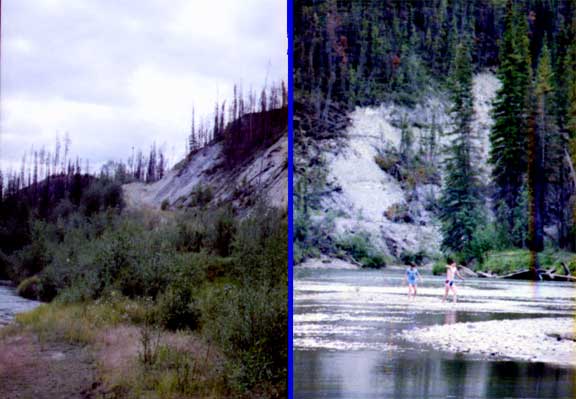 |
 Now Smith River is a very famous place because of one of those predictable war time accidents. A full formation of B-25 Mitchell bombers on the way to Russia had departed Fort Nelson and encountered some adverse weather. They knew they were close to the Smith River strip but seeing a smooth surface they landed on a raised frozen plateau about five miles East of the strip in what is now referred to as the Million Dollar Valley. There were no casualties in the incident as a rescue party from Smith River went out and found the whole works |
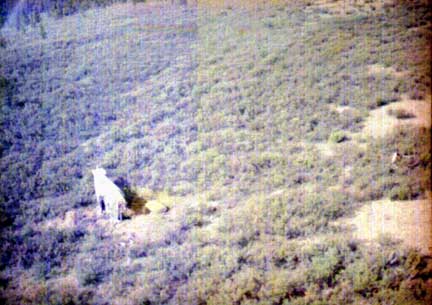 out on this froze bog. Several of the planes actually landed on their wheels. In the late seventies the aircraft were removed from the location and several are now flying as part of various museums. Anyone who saw the movie "Catch 22" has seen these aircraft after they were restored and used in the movie. One fuselage remains out there with some other parts as a tribute to bad navigation. Though prospectors and outfitters use this strip from time to time it belongs to the government of British Columbia and it is doubtful |
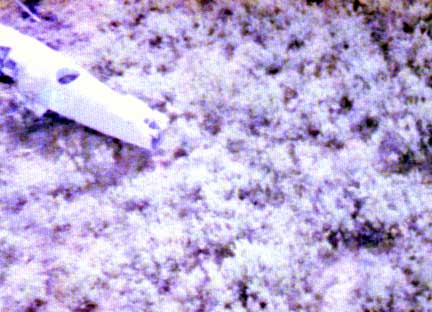 if an aircraft could get onto the overgrown runway now. It was made of clay with a great sand and gravel surface, perfectly smooth and up until it was shut down fully lit. Without a doubt one of the most remarkable places I had ever been. I have always regretted that we did not stay more days and find the hot springs. We had only taken a small amount of food with us and to this day Tim II, Andrew and I refer to bananas with completely discoloured peels as "Smith River Bananas" Timothy W. Shire |
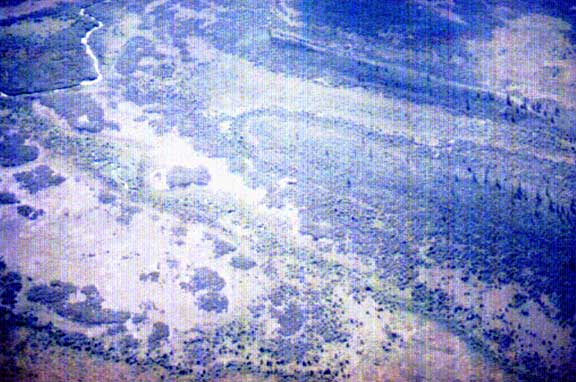 |